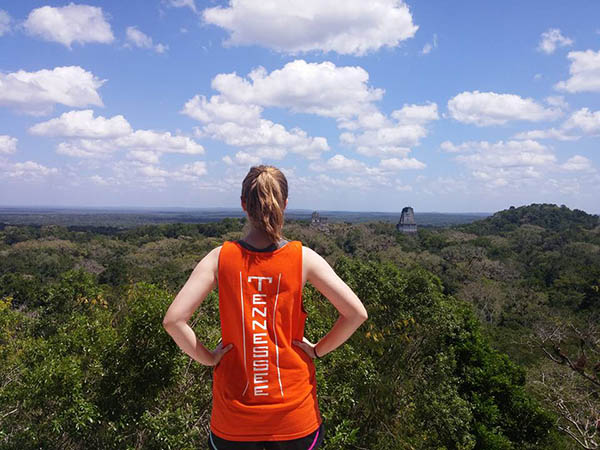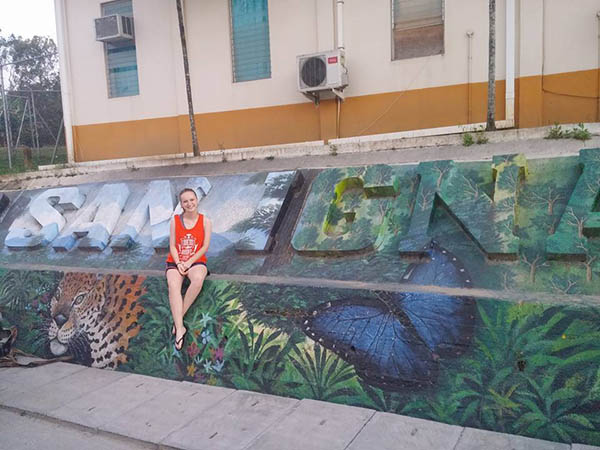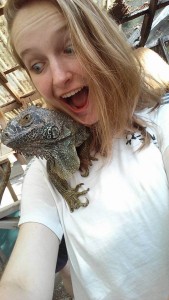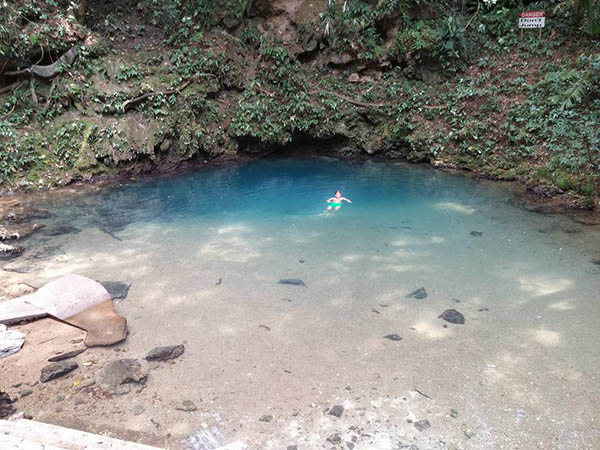Camille Bergin: Student Report from 2016 Alternative Spring Break in Belize

Before going to Belize, I had only been out of the country once on a cruise in seventh grade. A cruise is definitely not an accurate representation of what the world is actually like because it only serves as a photo-shopped snapshot of other countries. What I saw flying into Belize seemed like just that. The view from the flight was absolutely beautiful, with stunningly clear blue waters and gorgeous islands dotting the scenery thousands of miles below the plane’s wings. And this is what everyone pictured when I told them I was going to Belize for spring break.
Flying over the US, you see buildings and geometric designs that clearly show how much we have altered the natural landscape in this country to fit our purposes. But flying into Belize City, all you see is a river winding its way through a lush rainforest, and that natural beauty is something that unfortunately doesn’t exist too much anymore. Seeing that river was a clear indication that what I was about to experience during the following week in Belize was going to be drastically different than what people expected my trip to be like.

After landing in Belize City and seeing some of the city’s history and culture, we drove a little over an hour west to San Ignacio where we would be staying and working. If you think some of the roads here are bad, drive on Belizean roads and you’ll change your mind.

After breakfast on Sunday, the host family introduced us to the work we would be starting Monday and briefly explained how their project came about. The orphanage system in Belize works like this: when a child reaches the age of sixteen, s/he is released from the system with an incomplete education and no job skills; a child may go on to live on the streets after this point. The host family has a farm, and instead of just using it for their own purposes, they wanted to do something with it to help the community. They are very passionate about helping orphaned females, so they decided to turn the farm into a self-sustaining community for them. The girls will live in dormitories on the farm while they work there and take classes meant to help them succeed in Belizean society.
On Monday, we started work on a root cellar that would be underneath a two-story dormitory. All of the dormitories, which are earth-bag structures, are made from completely recycled materials. The first step to filling the bags is digging up dirt, mixing it with lime, and then wetting the mixture down. This creates a sort of concrete mix that will harden with time and eventually become stronger than steel once it’s in the bags (the bags are recycled chicken feed bags). Once the mixture is prepared, teams of two begin putting the dirt and lime mixture into the chicken feed bags. After a row is completed, the bags are flattened out and barbed wire is wrapped around the row to ensure the rows do not slip off of each other. By the end of the week, we had finished the root cellar that previous UT Engineering students had started on a similar trip last May.

The actual building process opened my eyes to different approaches to engineering, teamwork, and service, and the rest of the trip was equally rewarding. We had the opportunity to visit Mayan ruins in both San Ignacio and Guatemala; we went to an iguana sanctuary where iguanas were free to climb on visitors, and we visited a natural spring swimming hole and cavern that was bluer than the oceans we saw flying into the country. The one thing I noticed in Belize was how close to the land and nature the people are. Everywhere we went, we saw people sitting outside their homes and this exemplified how drastically different our cultures are. Here in the US, we are normally always inside whether it be our homes or buildings at school and work. But in Belize, we always saw people outside, and even the restaurants and bars were open to the outside. Just how the geometry you see flying into the US gives a pretty accurate representation of American culture, the river winding through Belize, observed as you first fly over the country, gives a perfect preview of the country and how in touch with nature the people seem to be. After going on this trip, I have become more aware of how much time we in this country spend inside on our phones or computers, shut off from the natural beauty that lies outside. Though it’s hard to escape certain aspects of our culture, such as the technology and the constant need to be inside in classes and at work, I hope to be able to incorporate some of the connection to the natural world that I saw in Belize into my own life, as well as the teamwork and engineering skills I learned while working on the farm.